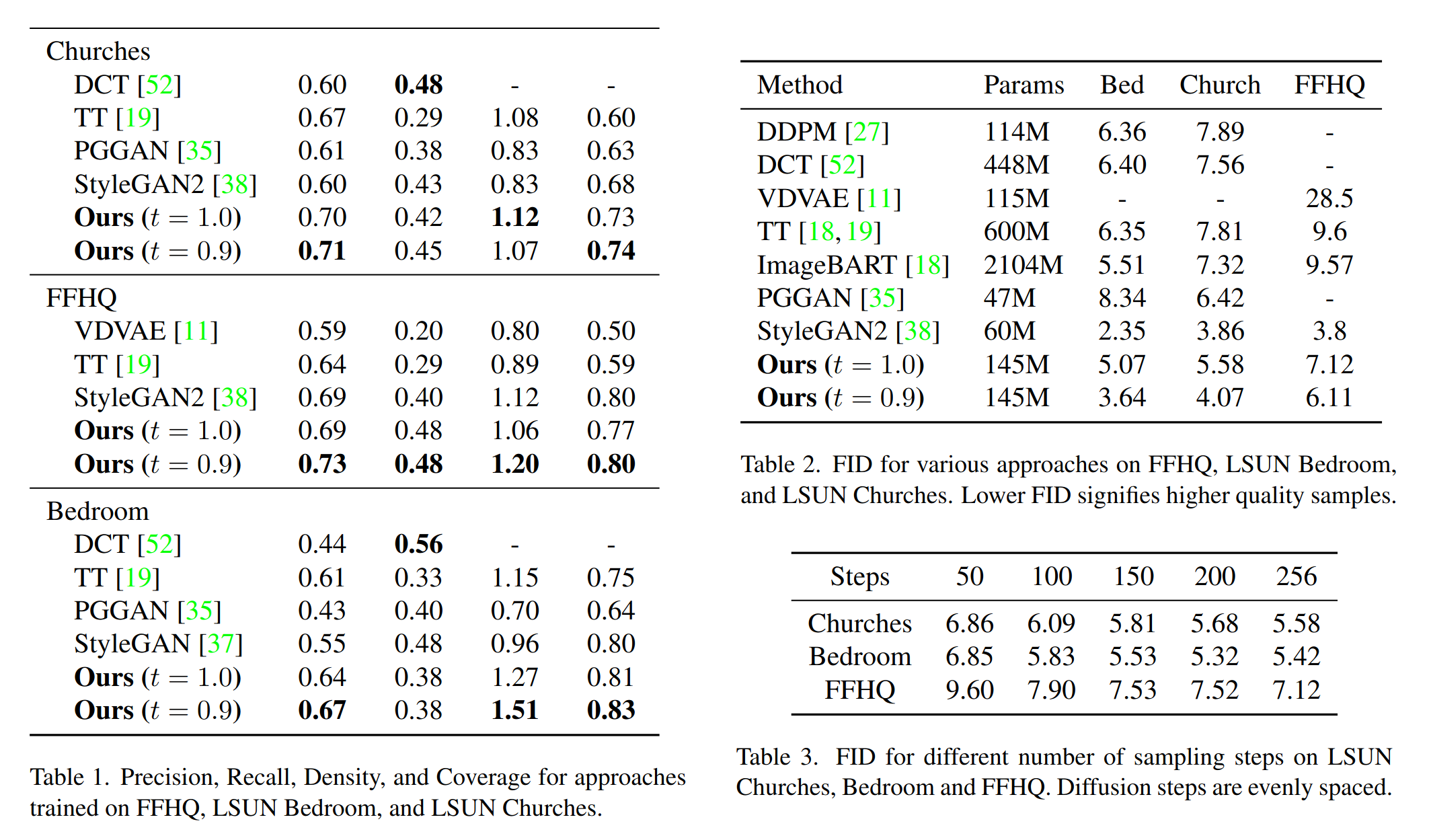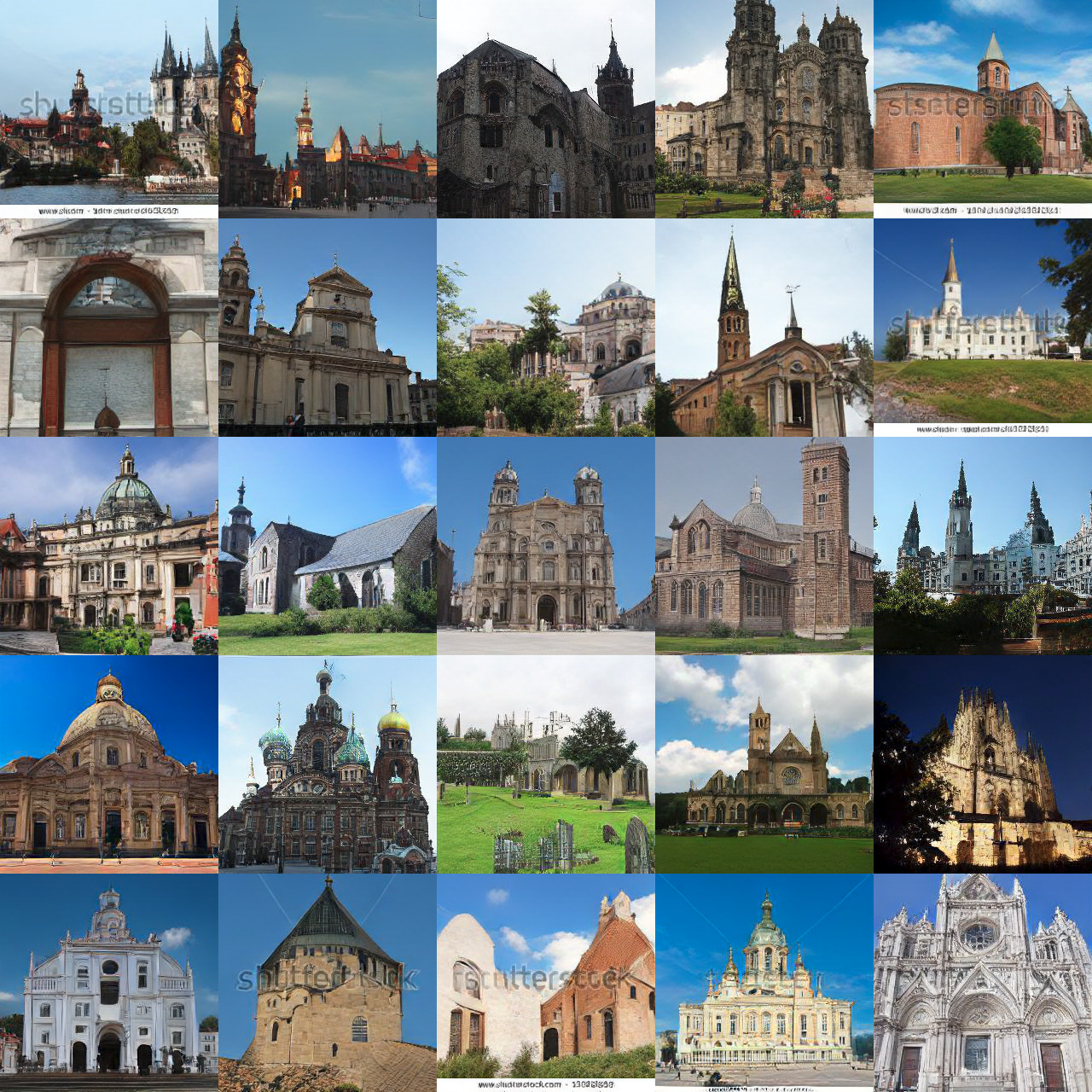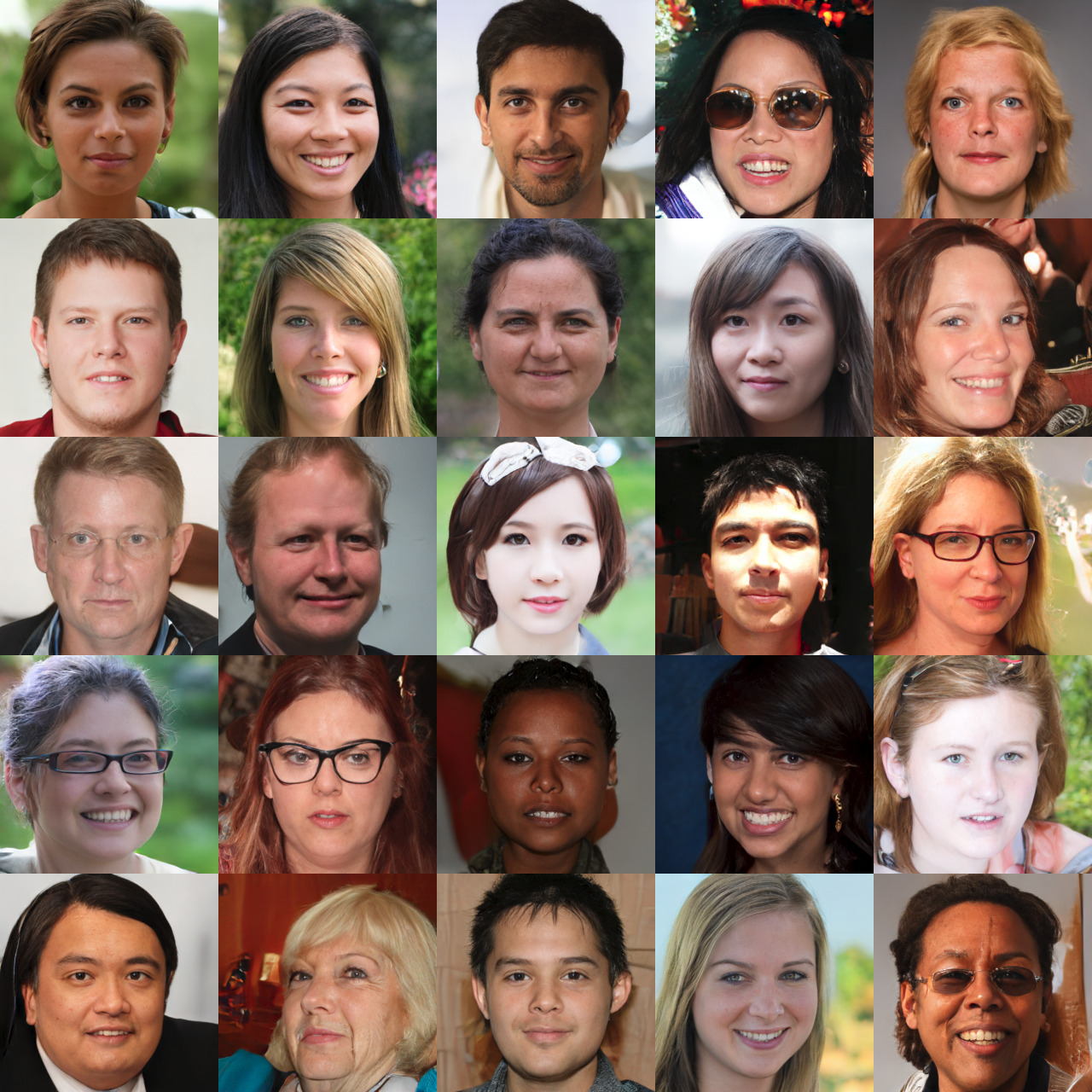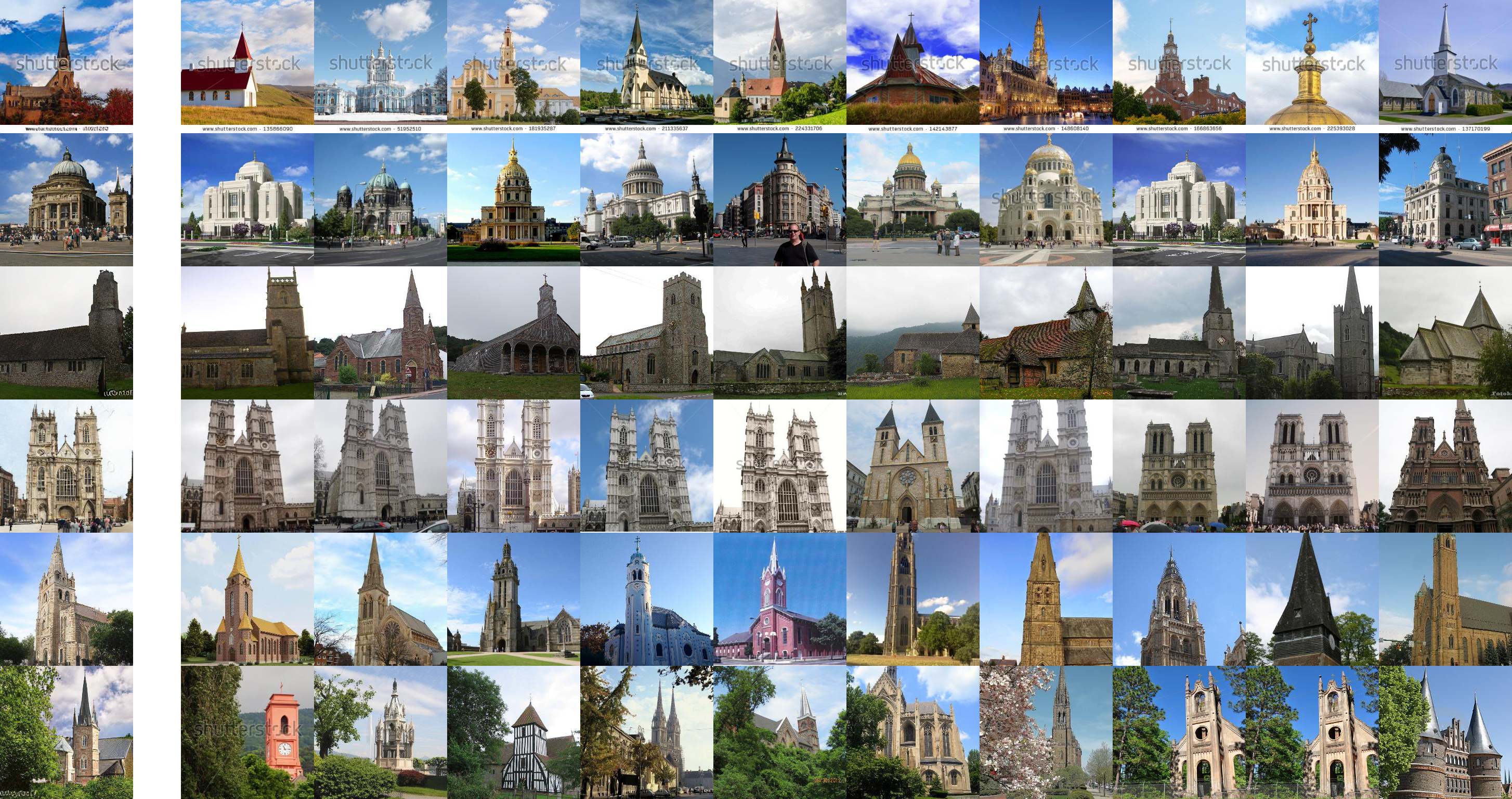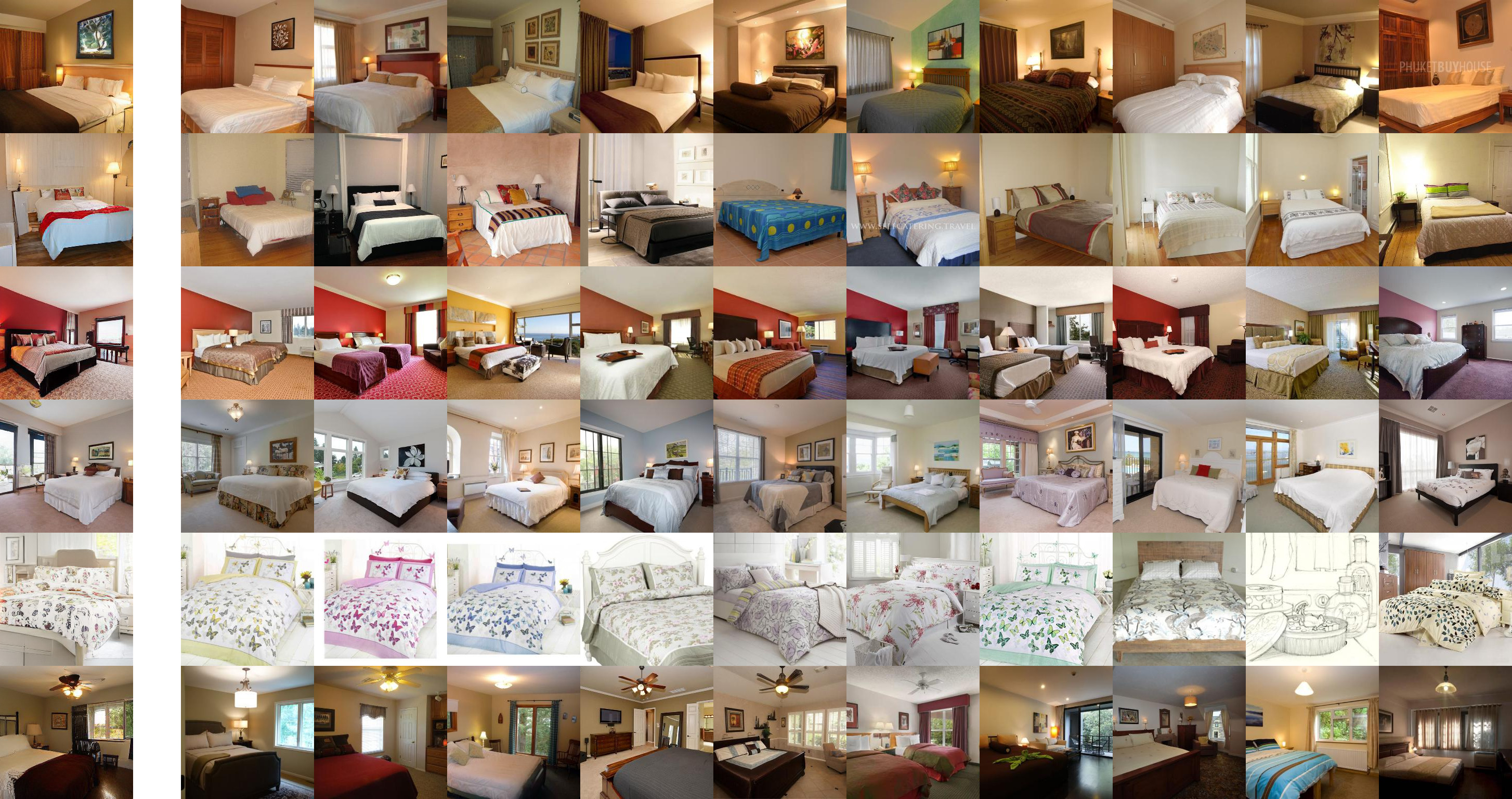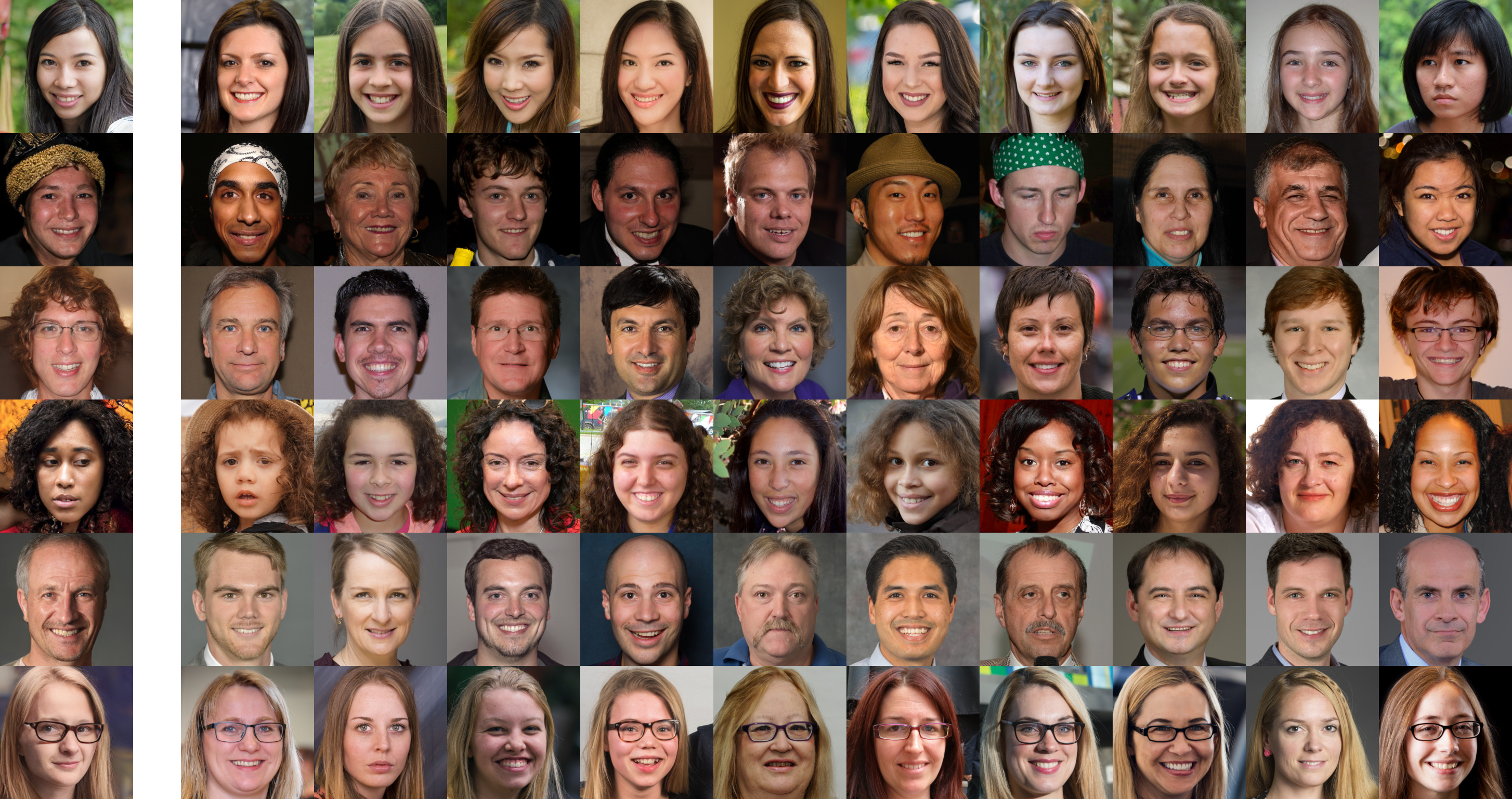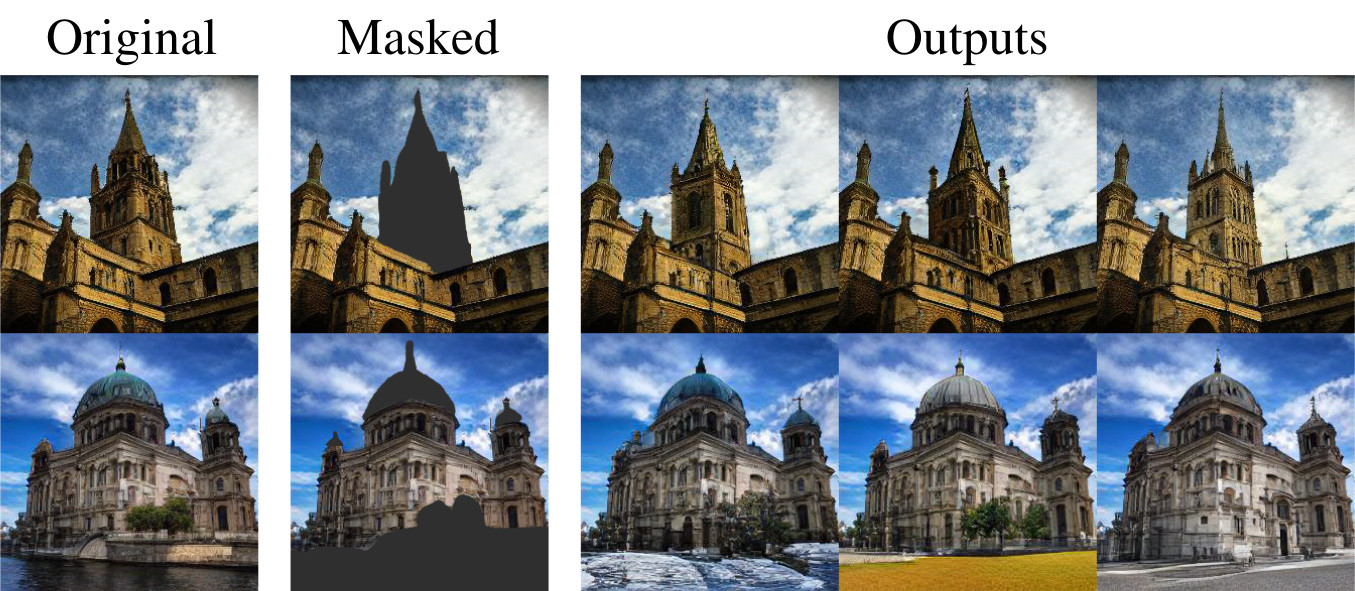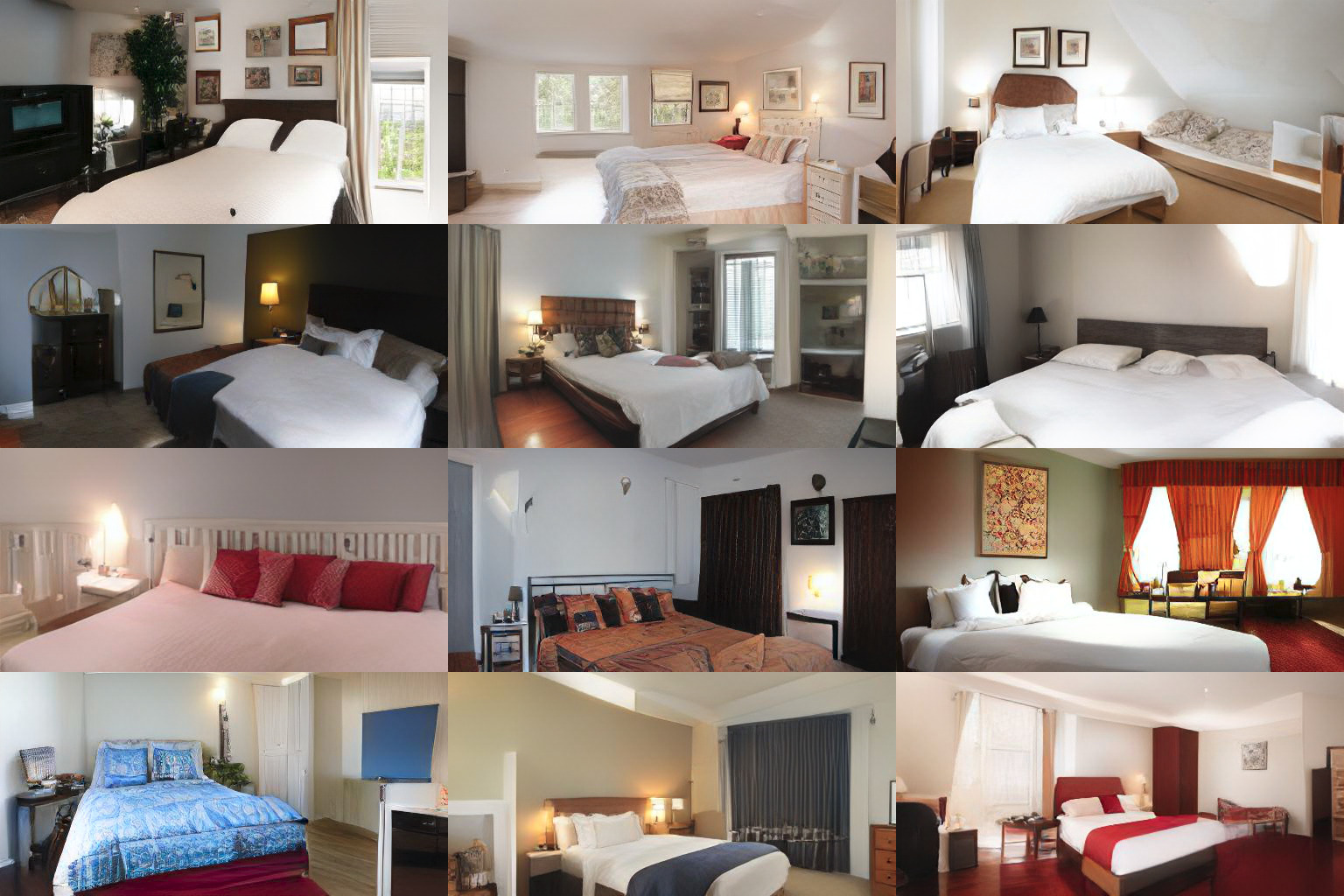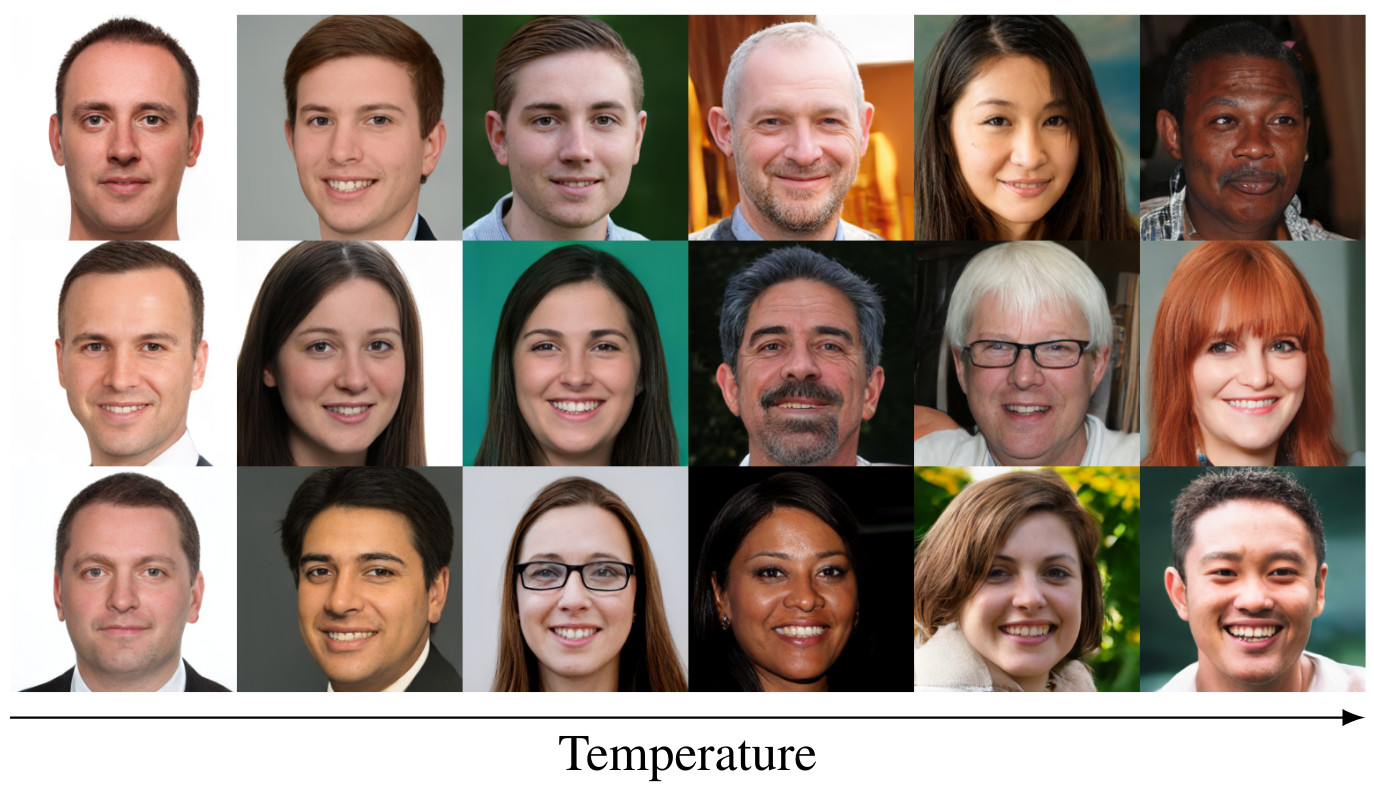Summary
We propose a novel parallel token prediction approach for generating Vector-Quantized image representations that allows for significantly faster sampling than autoregressive approaches. During training, tokens are randomly masked in an order-agnostic manner and an unconstrained Transformer learns to predict the original tokens. Our approach is able to generate globally consistent images at resolutions exceeding that of the original training data by applying the network to various locations at once and aggregating outputs, allowing for much larger context regions. Our approach achieves state-of-the-art results in terms of Density and Coverage, and performs competitively on FID whilst offering advantages in terms of both computation and reduced training set requirements.
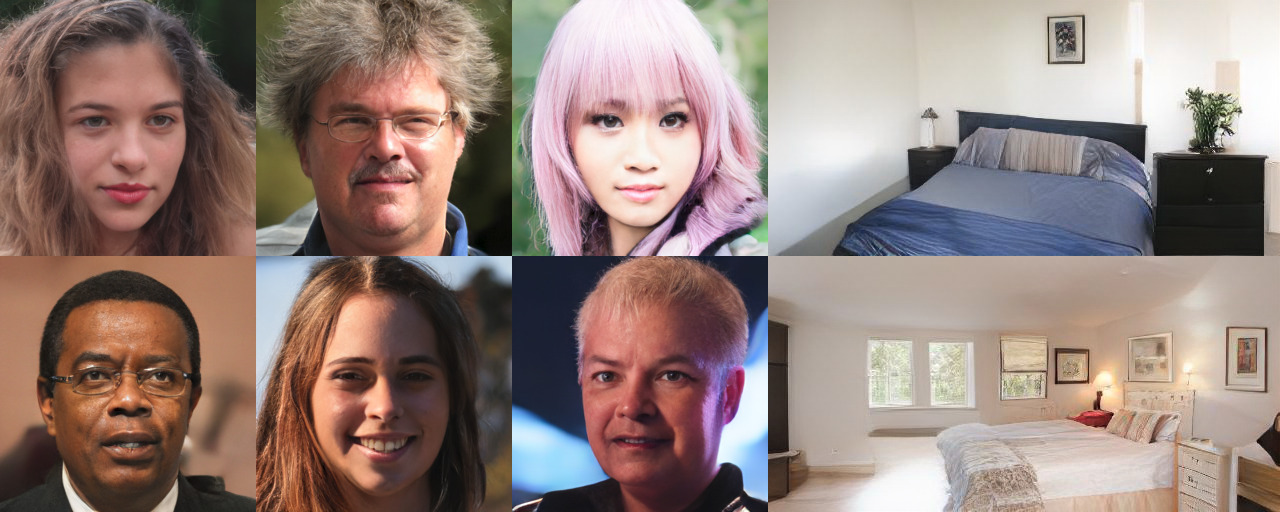

Approach
First, a Vector-Quantized image model compresses images to a compact discrete latent space:
\[\boldsymbol{z}_q = q(E(\boldsymbol{x})), \quad \hat{\boldsymbol{x}} = G(\boldsymbol{z}_q),\] \[\text{where } q(\boldsymbol{z}_i) = \underset{\boldsymbol{c}_{j} \in \mathcal{C}}{\operatorname{min}}||\boldsymbol{z}_i - \boldsymbol{c}_j||\]Subsequently, an absorbing diffusion model learns to model the latent distribution by gradually unmasking latents
\[p_\theta(\boldsymbol{x}_{0:T}) = p_\theta(\boldsymbol{x}_T) \prod_{t=1}^T p_\theta(\boldsymbol{x}_{t-1}|\boldsymbol{x}_t)\]Efficient training is possible by optimising the ELBO,
\[\mathbb{E}_{q(\boldsymbol{z}_0)} \Bigg[ \sum_{t=1}^T \frac{1}{t} \mathbb{E}_{q(\boldsymbol{z}_t|\boldsymbol{z}_0)} \Big[ \sum_{[\boldsymbol{z}_t]_i=m}\log p_\theta([\boldsymbol{z}_0]_i|\boldsymbol{z}_t) \Big] \Bigg]\]By skipping time steps, sampling can be significantly faster than autoregressive approaches.
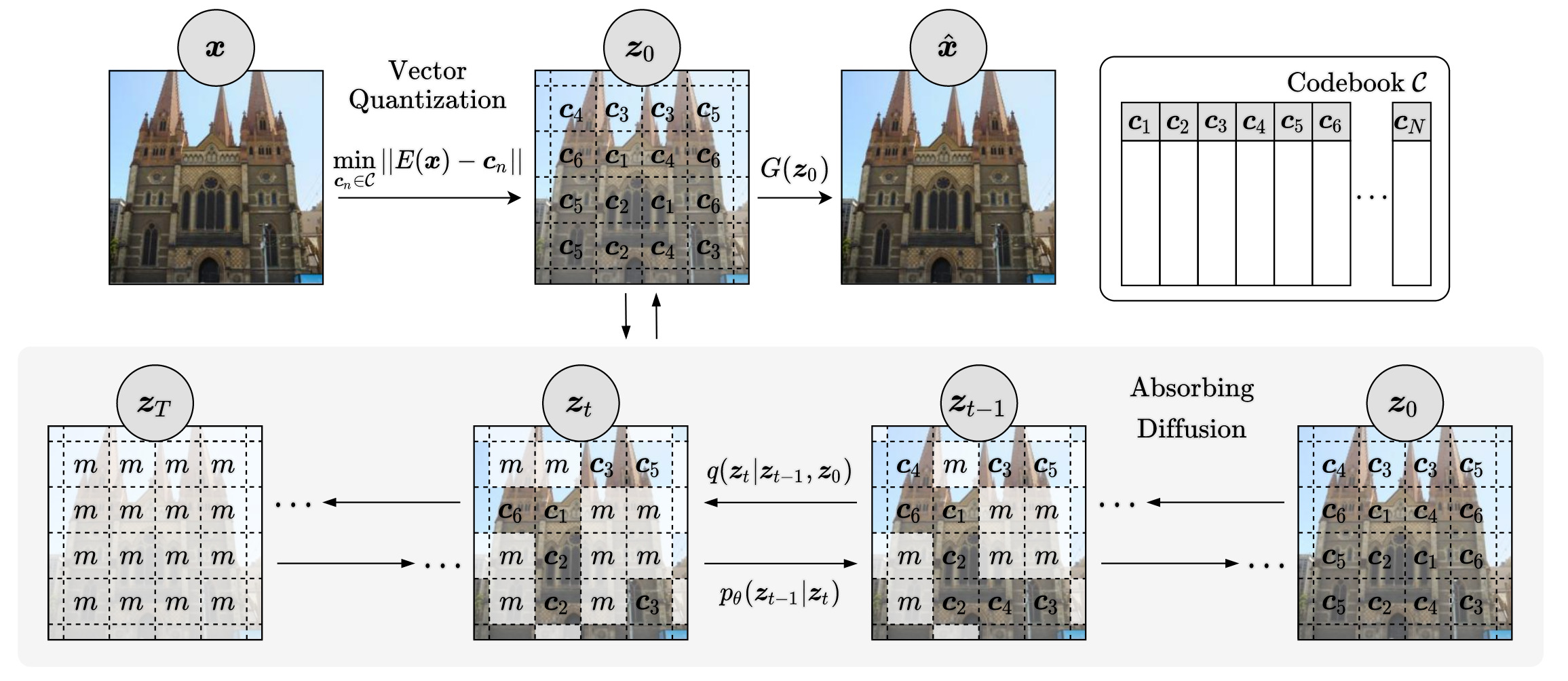
Evaluation
We evaluate our approach on three high resolution 256x256 datasets, LSUN Churches, LSUN Bedroom, and FFHQ. Below are the quantitative results compared to other approaches. Samples obtained with a temperature value of 1.0 on the LSUN datasets achieves the highest Precision, Density, and Coverage; indicating that the data and sample manifolds have the most overlap. On FFHQ our approach achieves the highest Precision and Recall. Despite using a fraction of the number of parameters compared to other Vector-Quantized image models, our approach achieves substantially lower FID scores.
By predicting tokens in parallel, faster sampling is possible. Specifically, we use a simple step skipping scheme: evenly skipping a constant number of steps to meet some fixed computational budget. As expected, FID increases with fewer sampling steps. However, the increase in FID is minor relative to the improvement in sampling speed.
